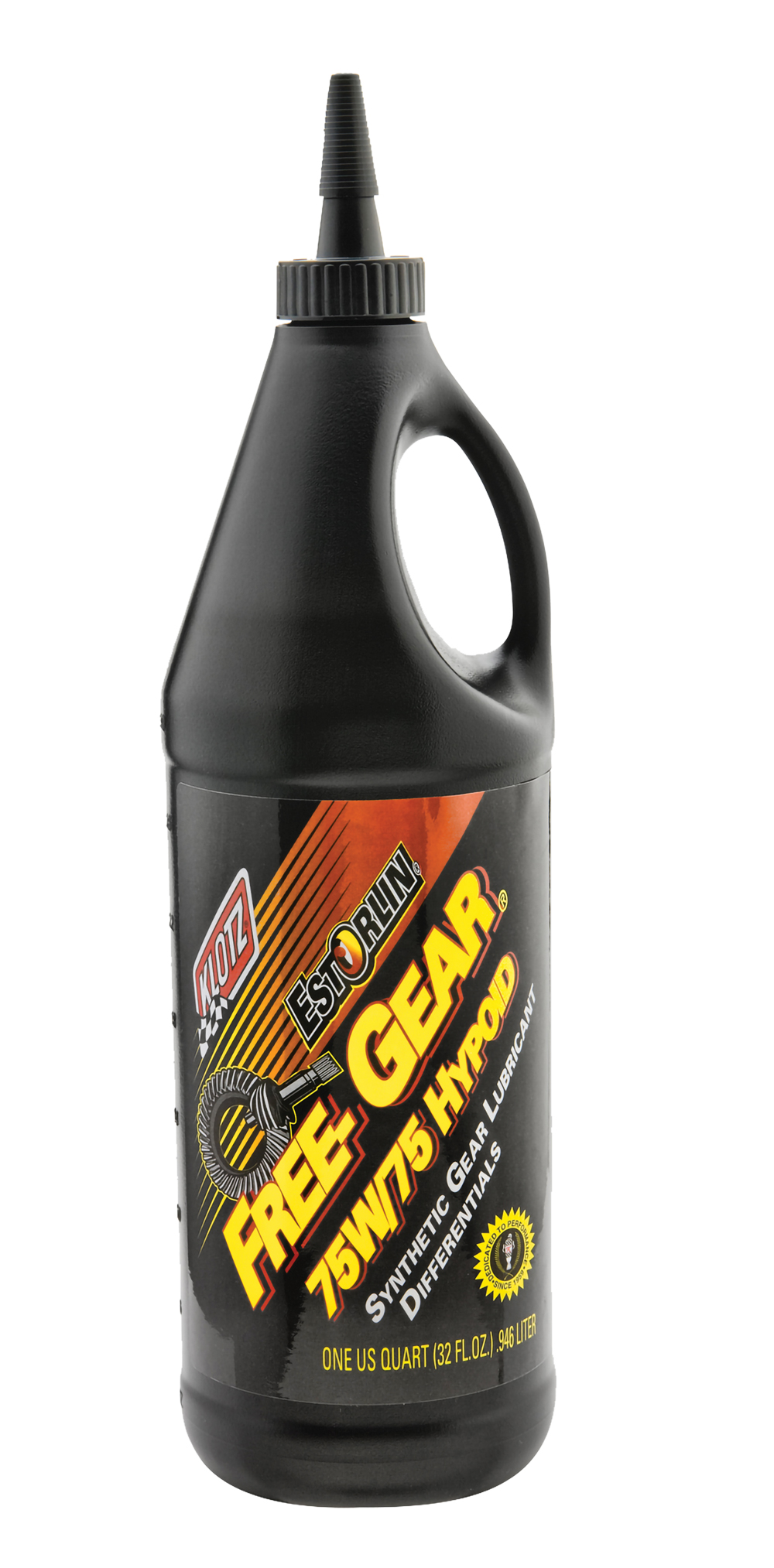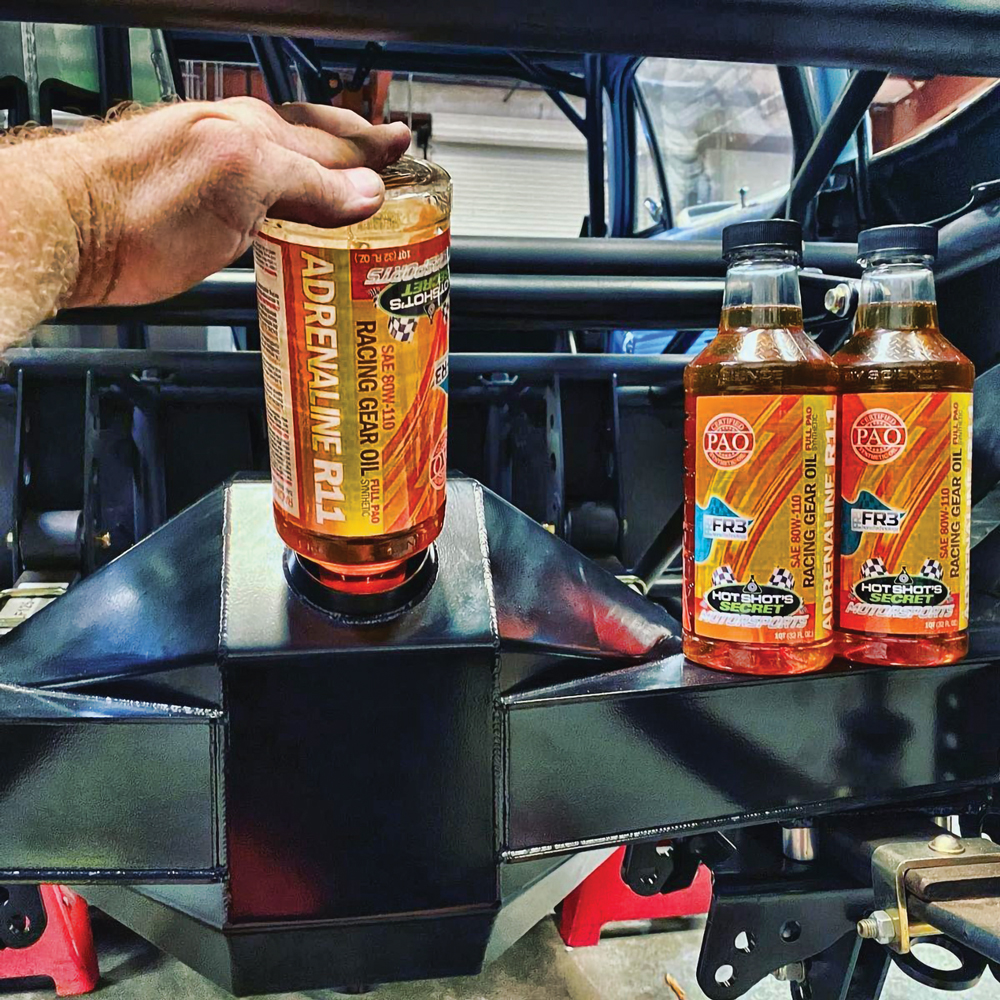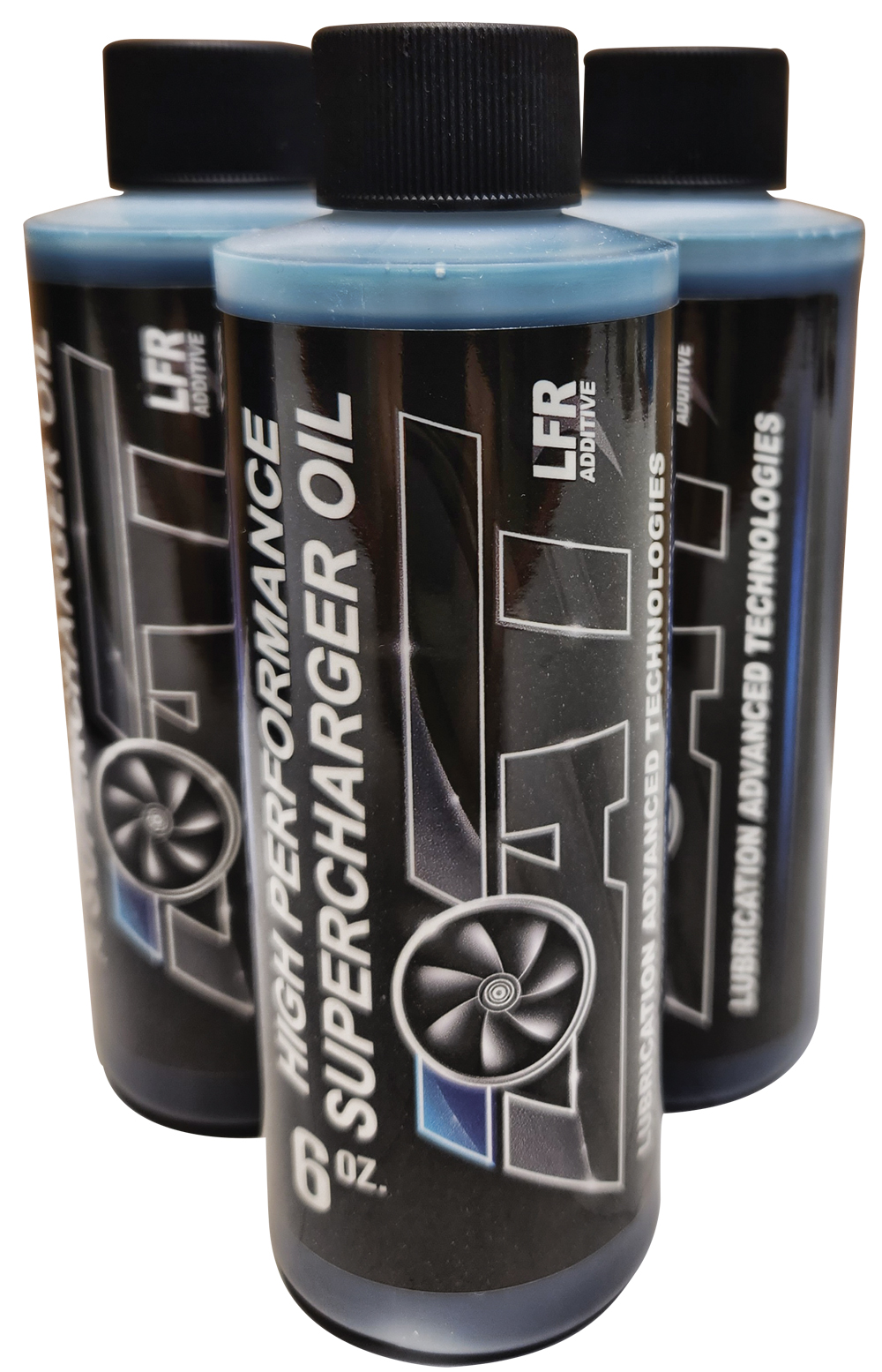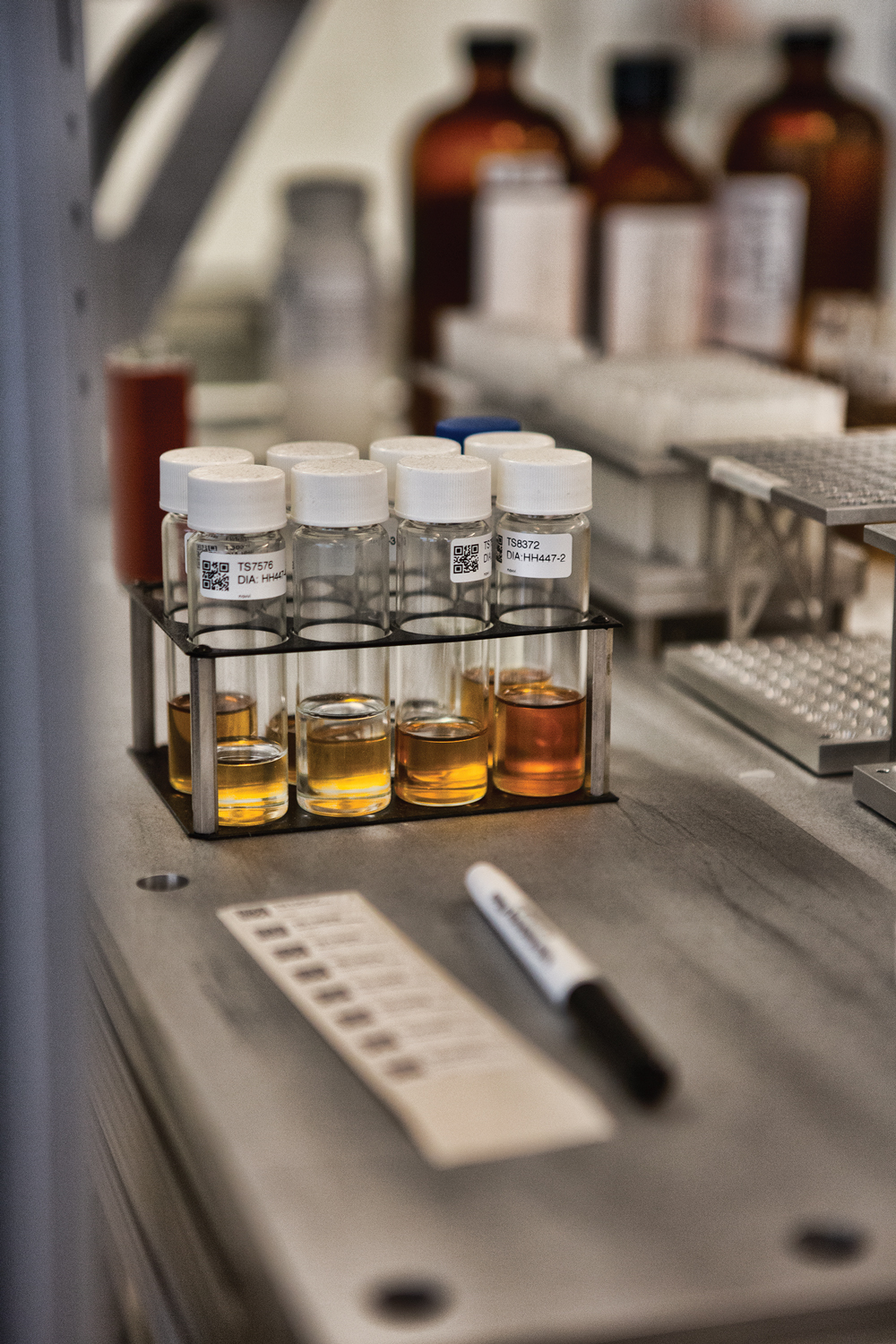Rapid Evolution

As engine technology changes, oil and lubrication technology must change with it to keep up with increased protection demands, higher temperatures, closer tolerances, and a growing call for renewable resources.
“We keep pushing the limits every year.”
That’s how Josh Steinmetz of Lubrication Specialties, maker of Hot Shot’s Secret in Mt. Gilead, Ohio, describes in a nutshell the current state of race engine technology, and the concurrent need to develop new lubricants for that technology.
“We keep finding more horsepower that wasn’t there five years ago, in the same race class that had very similar rules,” he pointed out. Those engines are often “doubling horsepower, or at least adding 25%.” That’s why “more and more people are going to synthetics and renewables as a steppingstone away from conventional oil, especially when it comes to the high-performance market. Conventional oil just won’t take the abuse that these high-demand applications dish out.”
The shift from conventional, petroleum-based oil to synthetic has been going on for a while. But Steinmetz and other experts in the oil and lubrication industry noted some additional trends that point to a rapid evolution of the whole field.
Gas Engine Lubrication Trends
“Gasoline engine oils are evolving to accommodate the increasingly severe operating conditions of new engine designs,” said Chris Mileti of Klotz Synthetic Lubricants, Ft. Wayne, Indiana. “These designs frequently include direct injection, turbocharging, high compression ratios, and elevated combustion temperatures. Modern oil formulations must continue to offer traditional performance features such as wear protection and deposit mitigation, but these formulations must do so while also offering new features such as preventing low-speed pre-ignition, resisting oil thickening from high-temperature oxidation, protecting timing chains from elongation, and providing measurable fuel economy benefits.”
Engine oils for racing applications have traditionally been “boosted versions of top-tier passenger car oils,” Mileti added, but that, too, is changing. “Most premium motorsports engine oils are bespoke formulations designed for a specific type of racing. They use additive packages and boosters that would damage passenger car emission systems. In general, motorsports engine oils are trending toward lower viscosity grades, especially in drag racing. They are also migrating away from mineral base stocks and toward higher performing synthetic base stocks.”

“The viscosity of oils is getting lower all the time,” Steinmetz agreed. “It used to be you never heard of a 0W-20, but now it’s common, and now there are 10- and 8-weights out there as well.” With viscosity that low, the oil has “less cushion to work, so we have to find unique ways to mitigate the wear and the degradation of the oil itself.” Hot Shot’s Secret’s nanocarbon technology “has done a great job of that. We add it to any oil and see improvements in wear reduction.” The nanocarbon technology “also reduces temperature, so the oil is less likely to shear and break down from heat.”
Ultra-low viscosity oils aren’t recommended for every drag race application. Danny Vaca of LAT Racing Oils in Orange, California, said he gets calls from customers “who say, ‘I have a turbo, with 50 pounds of boost, and I’m using a 20W-50.’ A 20W-50 can’t handle 50 pounds of boost. There’s too much pressure on the bearings and journals. In that case, they need a straight weight, like a straight 50. Sometimes people are misled on the difference between a straight 50 versus a 20W-50. A multigrade oil has a viscosity modifier in order for it to go from thinner to thicker, while a straight 50 has no viscosity modifier. It’s that thick because of the base oil.”
Diesel Oil Trends
“Diesel engine technology is changing just as quickly as gasoline engine technology,” Mileti said. “Traditional lubrication problems such as bearing wear, excessive soot, and poor low temperature operability are no longer significant issues with modern diesel engines. But these legacy problems have been replaced with new challenges such as high-temperature oil oxidation and more stringent efficiency expectations. As a result, new diesel engine oils are slowly migrating to lower viscosity grades to improve fuel economy. They are also being fortified with more effective antioxidants and detergents to mitigate both oxidation and deposits over increasingly long oil drain intervals.”

Low viscosity oils may work in production-based diesels—“I believe the small Duramax runs a 0W-20,” Steinmetz said—but he sees some racers “going heavier. Not across the board, but we’re seeing people looking at a 60-weight compared to a 50, looking for more protection, more cushion in the oil.” The reason, he believes, “comes down to parts availability. The thinking is, ‘How can I make this thing last longer?’ They’d rather give up a couple horsepower to make sure it’s going to stay together.” Plus, he said, in the diesel drag racing and truck and tractor pulling worlds, “these guys are making a huge amount of horsepower that they weren’t making a couple years ago. They don’t have to find every single ounce of horsepower. So now they’re trying to make longevity part of their equation.”
At Hot Shot’s Secret, “we’re seeing some demand for even higher viscosity oils,” Steinmetz said. “Our 60-weight is already on the high end of a 60-weight, and I have people wondering about a 70.” There’s no such thing as a 70-weight oil, he said, since the viscosity designations developed by the SAE stop at 60. Should his company develop a heavier weight oil, “we’d probably call it a 60-plus, to try to stay as close to the science as we can.”
Renewable Resources
According to Mileti, “The next 10 years will bring unprecedented change to the lubricant industry. Environmental regulations will encourage oil marketers to formulate engine oils with environmentally friendly or recycled (re-refined) base stocks. This will eventually lead to the formulation of engine oils using renewable, bio-derived base stocks.”
Evolve Lubricants of Reno, Nevada, is there already. It has developed “a special process of creating pure high-performance hydrocarbon molecules from plants,” according to a company representative, and it offers several different oils and lubricants using that non-petroleum technology.
“We have the answer today to get companies and people off of petroleum,” added Rick Lee. Motorsports is an important part of Evolve’s portfolio, but it’s just one component of a multi-faceted product lineup. Evolve has formulated diesel engine oils for over-the-road trucks that have shown a 4% mileage improvement, Lee said. “That’s a huge number to a company like Walmart or Penske that has hundreds of thousands of trucks and spends a billion dollars on fuel.” It also developed a small-engine oil, used by Home Depot, that in testing lengthened drain intervals four times more than normal. Evolve is now moving into a new category with a high-performance shock absorber oil that’s being tested by “some of the largest high-performance aftermarket and OEM shock manufacturers,” Lee said. “We are under an NDA so I can’t say who just yet.”
Hot Shot’s Secret is also doing some R&D with renewable formulations, Steinmetz reported, “in what we call the fleet line of diesel oils, the diesel oil most people use in their truck or hauler. We want to see if the renewable part can work in tandem with the synthetic base oil we already use to get longer drain intervals, and still maintain the wear resistance we like to see, and also if the detergency package will stay in solution with it.”
Mark Wheatley at TriboDyn Lubricants in Mooresville, North Carolina, has a different way of thinking about renewable resources and oil, “if you’re talking about reducing the carbon footprint. Using our oil can improve fuel economy by as much as 5–10%. An average car that goes 12,000 miles a year puts quite a bit of carbon in the atmosphere, but if you can improve its fuel economy by 5–10%, you’re saving that much in carbon footprint per vehicle. We’ve always been doing that, but with today’s new focus on green, we’re changing the way we promote our product.”
Can Oil Make Power?
In 2021, Evolve took part in an engine oil test put on by Porsche AG in which its EvoSyn 0W-40 European Car Formula non-petroleum oil was run in a Porsche 3.0-liter MA203 turbocharged engine to examine engine wear.
“They ran over several hundred hours in all different conditions, including stop-and-go and full throttle at the Nürburgring race track,” Lee said. “They said our oil maintained its viscosity under this test better than any other oil they had tested.” Additionally, dyno testing of the engine “gained a positive variance of 12 metric horsepower,” he added.
“If I can deliver 12 metric horsepower in a factory test, which is about 8 US horsepower, from a drop-in replacement oil change, that has to be the cheapest high-performance bolt-on in history. If I gave you a tenth of a second in every corner, would you take it?
“I can’t promise everybody is going to have the Porsche result,” he pointed out. “But everybody who’s using my oil is reordering,” including Bruce Canepa, “who’s running the most expensive Porsche 917s in the world.”
Wheatley could also cite tests that showed the use of TriboDyn oil increased engine power. “MAG Motorsports had the NASCAR Institute do a dyno test with our TriboDyn oil, and they picked up 4–5 horsepower on two different engines just by putting in the TriboDyn oil.”
In addition to the MAG Motorsports test, Wheatley recounted several anecdotes about racers and other users of TriboDyn oil who accidentally holed their oil pans or differential cases and went on to turn laps or drive miles after losing oil, with no damage to components. “When the oil or parts get hotter, the TriboDyn oil’s patented coating technology actually forms a dry lubricant film on the substrates to stop any micro welding or galling. It’s almost like powder coating the inside of the engine.”
The Unavoidable Trend: Cost
The high-quality base stocks and complex additive packages that go into racing lubricants come with a literal cost to the end user. That brings with it the inevitable questions, said Vaca. “They ask me, ‘Why is your stuff so expensive?’ They look at the cost, but they also have to look at the performance of the fluid. Once they’ve used it, they get it.”

For those who haven’t tried the LAT Racing lubricants, Vaca tries to “educate them on why its cost is so high, explain to them about all the components in the oil.” Not everyone is receptive, “and I get it. They’re probably thinking I’m a salesman trying to sell them something they’ve been sold before and it’s failed in the past, so it’s kind of hard for us to get our message across and really prove it. I work with them, be truthful with them, and sometimes I’ll give them a little discount for them to try it once. That’s the only opportunity I need is for them to try it once.”
Wheatley also sees the need to educate his customers about the benefits of TriboDyn’s oils, particularly racers who have been taught “by their family members, dads or grandpas that you need to change your oil after every race or every second race. The problem with that is, it’s expensive. If you feel you should change your oil 11 to 22 times because you race 22 times in a season, you’re spending $8–$16 a quart and you’re changing eight quarts before a race. That adds up to $704–$2,800 on oil per season. But by using our TriboDyn products, you don’t have to change TriboDyn oil before every race or every other race. You can extend it, so TriboDyn can save people money and still protect their engine.”
Wheatley did a test with a team on the Carolina Sprint Tour last year where they put eight quarts of TriboDyn oil in the car and “every third race, because they raced on dirt, they changed the filter. Never changed the oil, but we topped off. At the end of the year, they only used 12 total quarts of TriboDyn oil, which only cost them $144 for the whole year. When they took the engine apart, because of our film strength and because of the protection, the engine looked brand new.”
Wheatley regularly offers discounts of 20–40% to racers, and at the recent PRI Trade Show he handed out 40% discounts to “anyone at the Show. If they bought it one time, they got that discount all year.”
Beyond Engine Oil
Many of these companies have or are about to release lubrication products that go beyond engine oil. LAT Racing Oils recently developed a new drag racing automatic transmission fluid, Pro X, that’s a “much thicker ATF for heavier cars with lots of horsepower,” Vaca said. “It seems like there’s always a new class coming up, and we don’t hear about it until a failure occurs. So we worked with M&M Transmissions to develop an ATF with a lot higher viscosity for the heavier cars with a lot of power.”
The components in the Pro X ATF “are still like all of our other formulas,” Vaca explained. “Once we have a formula that works, all we do is raise the viscosity. We don’t change anything else. It’s still running the same high-end base oils” as LAT’s other transmission fluids.
LAT has also developed a new High Performance Supercharger Oil “for our customers who run ProCharger units,” Vaca continued. “They have needed something more robust, and we developed an oil that still follows our same focus on using higher-end base oils with higher film strength, which provide better lubricity to keep the parts alive.”
Hot Shot’s Secret has been prototyping new transmission fluids, “doing testing with racers with different viscosities to meet some of their different needs, especially in drag racing,” Steinmetz said. “Some of these guys are doing some really unique stuff with their transmission setup, and we’re working to provide fluids that meet their needs—whether that’s a little thicker fluid or a little thinner fluid—so they don’t have to make so many mechanical changes. By changing the viscosity of the fluid, they can make the torque converter lock up sooner or let it release at a different time.”

Klotz has “a full line of hypoid gear oils,” Mileti said, “with a formulation designed to be very shear stable and with robust corrosion inhibitors, all designed to protect the gearsets.” As an addition to that segment, Klotz developed a Limited Slip Axle Booster that is “an extremely advanced high-end friction modifier, which reduces friction for better power transfer, and it will lower operating temperatures.” The booster, Mileti added, “doesn’t have to be used with Klotz gear oil. It can be used with any incumbent oil to provide an extremely advanced friction modifier.”
TriboDyn has formulated a new break-in oil that Wheatley was handing out at the PRI Show. “You don’t want to use our TriboDyn Tri-Ex or Tri-Ex2 as a break-in oil,” he advised. “They have chemistry that won’t break in the engine. It’s too slippery.” Instead, the new TriboDyn break-in oil is an exclusive formulation with 2,200 ppm of zinc, plus high-sulfated ash, phosphorous, and sulfur to provide critical protection to high-performance engines during the engine’s break-in period.
TriboDyn has also taken its grease blending in-house, and new product labels will mark the change-over. The company will offer four different grease products: a base grease with 5% moly, called TriboDyn Moly 5% Multi-Purpose Grease; and TriboDyn’s patented greases, a good-better-best offering of Tri-All multi-purpose grease, Tri-Max high-temp extreme grease, and Tri-Ex2 extreme pressure high-temp grease. The latter three represent “three different levels of extreme pressure, high-temperature patented technology, with the same coating technology in the grease as our oil product,” said TriboDyn’s Rick Pelfrey.
“We went with three levels of grease because it’s expensive to put the additives in there, and some of our customers may not need to go all the way to Tri-Ex2, which has a four-ball test over 1,000-plus kilograms. We have customers trying all three right now and finding they may be okay with the middle grade, the Tri-Max, and will go with that for their applications.”
What the Future Holds
The use of lubrication products with renewable components is only going to grow, according to Evolve’s Lee, due to what he sees as “a convergence of public policy, public opinion, and consumer demand, interest in, and acceptance of renewable products. We have the talent to do just about anything, and we’re small enough to do that. We are already making renewable gear oil and renewable transmission fluids. They’re not available to the general public, but we are testing with the US military in non-tactical vehicles.”
Lee’s plans aren’t limited to lubrication products. “We have the technology to make renewable fuel, jet fuel, and gasoline as well. It’s already part of our IP. We can take our feed stock and split it in two directions to make finished lubricants or fuel with our technology,” he added.
At Hot Shot’s Secret, Steinmetz foresees the company doing even more with its nanocarbon technology. “We’re looking at other sources of them, how they interact with newer oils, and how we can use them more efficiently.” By efficient, he means “better reductions in friction and wear, and also the treatment of the oil. Can we put lower amounts of additive in the oil and still get the same results? As base oils improve, we may not need as much additive. That’s something that’s continuously changing.”

Tolerances are “getting smaller in every engine,” Steinmetz added, “and as they do, there are opportunities for lubricants to step up to the plate and meet those challenges, whether that’s a better base oil, a better additive pack, or things we can add for wear resistance.”
Looking at the lubrication industry in general, Klotz’s Mileti said the next five years “will bring both logistical and technological changes to the engine oil market.” The logistical changes have already started, as “oil manufacturers are quickly restructuring their supply chains to deal with inflation, component shortages, shipping challenges, and rising geopolitical tensions.”
The technical changes, he said, “may be even more dramatic. Engine oil is increasingly being used as a hydraulic fluid, as in hydraulically actuated camshaft phasers, for example. Hydraulic fluids must be incompressible to function properly, so oil formulations will become optimized to prevent aeration.”
Other technical challenges will present themselves with “the increasing market share of electric passenger vehicles, along with a growing number of electric racing series,” Mileti said. “That will force oil marketers to redirect their formulating expertise to other lubricants in the vehicle, which could lead to drastic improvements in the performance of driveline lubricants, wheel bearing greases, and shock fluids.”
Mileti also said the trend to longer drain intervals will likely lead to “the adoption of oil condition monitoring technology in the transportation sector.” Already in use in industrial applications, these monitors “can measure basic oil parameters such as temperature, pressure, acidity, viscosity increase, wear metal content, and water dilution. In theory, oil condition monitoring will eliminate the need for scheduled oil drain intervals. The oil will only need to be changed when the sensor identifies a significant degradation in performance.”
Currently, these monitors are very expensive, but prices are dropping, Mileti said. “These lower costs, combined with the growing data transmission capabilities of cellular networks, have made the technology more feasible for transportation markets. In my opinion, it’s just a matter of time before it finds its way into professional motorsports—if it has not already done so. This technology would be another tool that crew chiefs and race engineers can use to monitor the health and performance of engines and driveline components during testing or competition.”
SOURCES
Evolve Lubricants
evolvelube.com
Hot Shot’s Secret
hotshotsecret.com
Klotz Synthetic Lubricants
klotzlube.com
LAT Racing Oils
latracingoils.com
TriboDyn Lubricants
tribodyn.com
 MEMBERSHIP LOGIN
MEMBERSHIP LOGIN JOIN PRI
JOIN PRI


